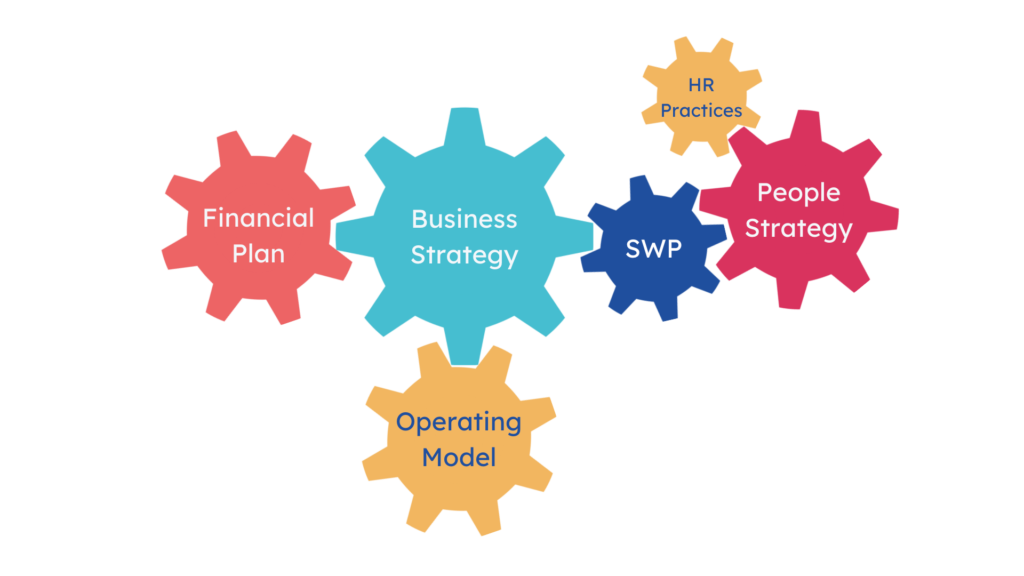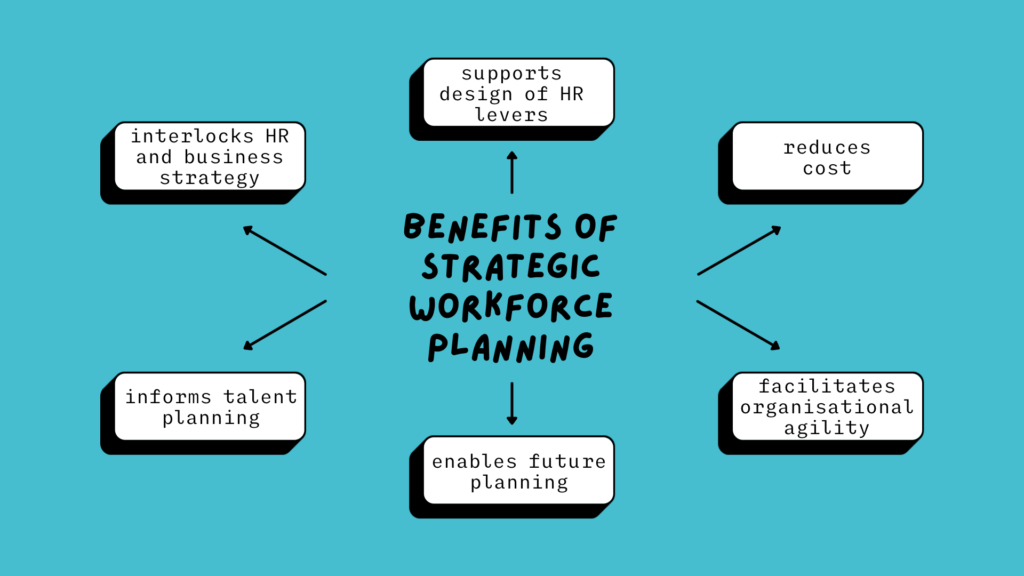HR should be at the centre of helping companies achieve their long-term business goals, while also taking care of their people.
Your business starts with your employees – if they thrive, your business will thrive, it’s as simple as that.
You may intuitively sense to move from surviving to thriving, you need to invest in the people aspects of your business but are unclear where or how to start.
In this blog, we are sharing 5 key areas to focus on, to improve your employee experience and therefore elevate the service they are providing to your customers.
‘You don’t need to be a genius or even a college graduate to be successful, you just need a framework and a dream’ – Michael Dell

Setting up for Success – Introduction
As a leader, you probably know or recognise there will be legal compliance issues from the very first day you employ someone. Often, as a leader you take on these responsibilities, even though it may be something you’ve never done before. While this can be good for broadening your personal experience and skill set, it may be distracting you from your core focus and using too much of your valuable time.
‘Focus is key. Spreading your resources and attention across too many fronts can affect your business growth’ – John Colman
You may intuitively sense that to move from surviving to thriving, you’ll need to invest in the people aspects, but you may be unclear what that looks like and are too busy to spend time figuring it out.
In this blog, we are sharing our thoughts on how having a solid people foundation in place will not only protect you and your business from unnecessary risk but also create a more engaged and productive team, which in turn makes (and saves) your business money.
What do we mean when we say strong people foundations?
Your business starts with your employees – if they thrive, your business will thrive, it’s as simple as that.
Making your business somewhere your employees and future talent want to work is key. Your people foundations are the HR policies and procedures that determine how people experience your business.
Therefore, establishing solid people foundations (or an HR framework), will ensure your business can attract and retain the right people you need, into the right roles, at the right time to enable your business to flourish. Without it, you’ll find yourself reacting to people issues on a rolling basis, putting you on the back foot and detracting from your ability to meet your business goals.

Having appropriate people management support makes good business sense. However, if your business is small, say fewer than 500 employees, you may not be able to afford or have a requirement for a permanent HR specialist, so buying in the expertise you need as and when you need it may be a perfect peace of mind option.
As business owners and leaders of teams, we recognise the need to juggle a range of priorities to fit everything in, so if there is an opportunity to put in place measures to run things more efficiently, that isn’t overly time-consuming or complex, isn’t this something worth considering? A review of your people infrastructure and a focused action plan to address the key gaps can do this for you.
Here is a summary of what we believe are the 5 fundamental elements needed to provide a solid foundation from which to build. Getting these right when your business is small, means it will just be a matter of making minor adjustments as you grow and your needs start to change.
The Fundamentals
1. Legal Stuff
Let’s start with the basics – the importance of getting your legal compliance in place is your number one priority.
Ensuring compliance with employment law is an absolute pre-requisite for running a business. In the same way you need to ensure you meet health and safety requirements, getting this aspect wrong could have devastating consequences for you.
Ensuring your people practices are not only aligned to the legal requirements but are set up in the spirit of the law, will save you time and expense down the road investigating and responding to audit findings or mitigating against an employee issue that could become more serious.
Some good examples of what we mean by this can be summarised as follows:
An employee handbook is a good starting place for any business seeking to formalise its employment practices and ensure consistency of treatment. Another top tip is to have standard HR operating procedures to document processes that occur infrequently, making it easier to be consistent over time.
2. Recruitment
Recruiting people well-suited to the role and the company culture, is key to the success of any business. It’s essential you find new recruits who buy into what you are trying to achieve and therefore bring their energy and passion for the product or service to bear for the good of the business and your customers.
‘Bringing great people onto your team is about demonstrating that size really doesn’t matter – people do’ – Jess Campbell
If one or two key roles are vacant for any length of time, the temptation may be to compromise on what you are looking for and to just fill the position. However, taking the time to find the right person will save you a bigger headache further down the line.
Creating a good hiring process is an essential part of your people framework, alongside coaching and guidance for anyone involved in the hiring process. The ability to make well rounded decisions quickly is key in the current climate, and as any candidate will tell you, the hiring process tells you a lot about the company you are thinking about joining.
Remember it’s as much about the candidate forming an opinion about you and your business, as it is about you finding the right person, so a process designed around the experience for the individual will set you apart from the competition.
3. Organisation
A well thought out and organised people structure enabling employees to work efficiently and effectively, will pay dividends. This is just as important in a small business as it is in a large multinational, since it is the people that provide the service that differentiates you from your competitors.
‘Spend time upfront to invest in systems and processes to make long-term growth sustainable’ – Jeff Platt
Organisation charts visually represent the internal structure of a business, by detailing the roles, responsibilities and relationships between individuals. Role descriptions help employees to understand their responsibilities and how their work contributes to the overall goals of your business. They are also useful for recruitment decisions, ensuring you find the individual best suited to each role. Without role descriptions it is usually difficult for a person to properly commit to or be held accountable for a role.
A tip if you are on a budget, is to use the tools available to you to optimise and maintain your people structure, for example, using a spreadsheet to track employee information, create checklists and store employee data.
4. Performance Management and Reward
‘High achievement always takes place in the framework of high expectation’ – Charles Kettering
Performance management is a mechanism your business can incorporate to ensure employees feel connected to and can contribute towards business goals. Tailoring an approach and framework for your business, supported by the provision of training for people managers is a good investment.
Done effectively, performance management is about having great conversations as regularly as you can, with a structure that enables you to hold employees to account for their performance and contribution, as well as identifying individual development needs, and linking performance to reward and progression.
The ability to create and communicate a salary and benefits package to attract and retain the people you need is critical. A review of what others are paying, e.g. some benchmarking for equivalent roles in the area and beyond, will ensure your rates are competitive, plus if your overall package has some flexibility to be tailored to meet individual’s needs, then all the better.
Roles are often advertised without mentioning salary as it can be a contentious area, particularly if you are not able to offer premium salaries. However, we would recommend being up front and sharing what you can offer to potential applicants, as this will help manage expectations and ensure only those applicants genuinely interested in your role will apply.
Having in place a simple pay structure that recognises the skills, experience and attributes you are looking for in candidates, should help make negotiating offers a breeze and ensures that you are compensating existing employees equitably.
5. Communications
Retaining great people is dependent upon having strong employee engagement. If your employees feel connected to the business and understand how their role links to the overarching goals of the business, then they are far more likely to stay.
Creating a strong narrative about your business and what you are trying to achieve will help attract the right candidates. Coupled with a well thought out induction process, will reap the benefit of new joiners feeling engaged, informed, supported and able to start contributing straight away.
With day-to-day demands hitting you at work, it is all too easy to neglect communicating with your employees. Having a regular drumbeat for your people updates doesn’t take long to set up and will ensure your employees are in the loop and have a clear understanding of business performance and expectations of them. In our experience, even the most difficult news is easier for employees to accept when they feel their employer has been transparent and they have a good grasp of the business rationale for the decision.
Employee Experience
‘You don’t build a business, you build people, then people build the business. Your people are the builders of your business’ – Zig Ziglar
The design of your people foundations or framework should reflect the culture, employee and customer experience you would like to create. If you feel your current people policies or processes are not aligned to this purpose, then perhaps a review of your existing practices may be helpful in identifying what you need to redesign and do differently for maximum impact. A review could also identify opportunities to better align your people practices to support your business priorities.
A useful lens for completing a review of your people framework is to measure your employee engagement level at different stages throughout the employment lifecycle. Some examples of the sort questions we may ask and why, as part of our health check service are shared below:
How we can help and next steps
With an understanding of the importance of having a solid HR framework (people foundations) and an outline of the essentials, what will you put in place this year? Please leave your thoughts below. By openly sharing your intention, it creates higher accountability and increases the likelihood you’ll get it done!
Ensuring your business is built on strong foundations is our purpose. We’re passionate about working with leaders like you to optimise your business. If you think your business would benefit from having a health check, please get in touch.





